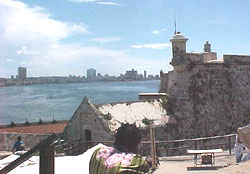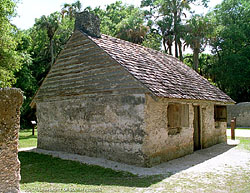What is heritage?
Heritage is made up of the people’s stories, myths and symbols located in our collective memory. Heritage is comprised of our philosophy, values, ethics and morality, beliefs that are embodied in our national, local and family heroes whom we commemorate in expressive art forms, cultural performances, and ceremonies. The sites, buildings and landscapes where we express our heritage become sacred hallowed ground. We memorialized events, people, and places, structures and landscapes that represent moments in our social history that were the proud or humbling, pleasurable or painful occasions. We save and celebrate objects we create and things we use from nature along with evidence and sites of our religious, political, economic and social institutions. In short, our culture and our history are inextricably intertwined in our heritage.
The term “cultural heritage” has not always designated the same things and, in recent decades, the notion has changed considerably in order to express more aptly a more global and holistic approach which alone can testify to the universal nature of the human spirit in all its creations.
After first referring to the most monumental remnants of cultures like Fort Moro dating back to the Spanish settlement of Cuba, the notion of heritage was gradually extended to new categories drawn from non-artistic sectors of activity such as the industrial heritage like the 18th century iron furnace preserved by the National Park Service at the Hopewell Furnace National Historic Site or from specific contexts such as the underwater heritage identified and preserved in underwater archeological sites.
In recent years the concept of cultural heritage has included a focus on systems of knowledge, acts of creation and representation. When we speak of cultural heritage we include expressive cultural forms, rites, festivals, the reproduction of culture that is, the way cultural groups transmit traditional skills, beliefs and practices and the fluctuating content of communication in language and oral traditions. These intangible forms of heritage are the “stuff” of culture that ethnography uncovers and documents. They are important in their own right but they take on added significance as ethnography helps us unlock these meanings. Park ethnographic research helps extend our knowledge of these connotations to the end of an enhanced understanding of the buildings, monuments, sites, objects, places and landscapes that the Park service is charged to preserve.
Today, the notion of heritage is an open one, which can develop new objects and put forward new meanings as it reflects living culture rather than an ossified image of the past. We have become aware…“that nature and culture cannot be separated in our approach to heritage if we are to render a true account of the diversity of cultural manifestations and particularly those in which a close link is expressed between human beings and their natural environment (UNESCO, 2002).” The relatively recent notions of a cultural landscape, and more specifically a cultural landscape that is an ethnographic…cultural…resource, are both what UNESCO calls achievements of this elaboration of a more coherent vision of cultural heritage.
Southern plantations, for example or urban neighborhoods may be cultural landscapes that are also places that have significance for traditionally associated living people who define the landscape and its sites, structures and objects found on it as heritage resources. Historic districts surrounding National Historic Sites are other areas containing natural and cultural resources that traditionally associated people define as heritage resources (NPS 1997).
Through ethnographic studies we uncover the differential meaning of a plantation mansion and surrounding farm lands to descendants of those who raised the crops and maintained the residence in contradistinction to those who owned the land and lived in the “big” house. Ethnography helps to establish the cultural boundaries and invisible landmarks in urban historic districts to identify the heritage resources of diverse groups who inhabit the same locale at different times in history. It explains why a park called Mount Morris Park in the first half of the 20th century may be renamed Marcus Garvey Park in the second half of the century. This leads to the question, “What is African American Heritage?”
African American Heritage
Social memory is critical in the creation of social meaning. African American history and heritage, like that of other ethnic groups, are ideologically constituted and must be represented through each group’s unique symbolic system. Social memory is integral to social meaning of groups. People form images of themselves in relation to a set of founding events, like July 4th, then re-enact this shared link into a collective past in public ceremony as well as everyday life. It is through these processes that diverse individuals and groups in America came to see themselves as having a collective identity as a nation with a common present and future (Alonso 1988). While contemporary African Americans share in valuing the memory the declaration of Independence signed on July 4, 1776, during slavery many African Americans, recognizing the contradiction between America as a slaveholding society and one founded on the premise of liberty and justice, refused to celebrate. Instead they celebrated various dates associated with gradual emancipation in the northern states. Today, some African Americans celebrate Juneteenth, a date commemorating the liberation of their fore parents from enslavement by virtue of the Emancipation Proclamation.
The past and present are linked in symbolic systems that invoke and involve the names of heroes to structure public space. George Washington Carver National Monument and the Maggie Walker National Historic Site are examples of the structuring of public space to commemorate African American heroes. The naming aspect of heritage extends to other public places and spaces like streets, libraries, state parks and museums, keeping social memory alive.
While African American heritage like the African American experience has been an integral part of the American heritage experience, the sound of their voices along with other Americans of color, women, and the poor, have too often been silenced, buried, disguised, disqualified and marginalized in telling the American Heritage story. Representing the past and the way of life of populations is an expression and a source of power. Conversely inclusion of people’s voices in the representation of their own past and life-ways is empowering (Bond and Gilliam 1995). This is the premise upon which this course has been developed. African Americans are involved in its development. The course frequently cites African American sources and includes In Our Own Words Pop-Ups to give voice to African Americans in representing their own past.
Learn how Park Ethnographers help uncover people’s heritage through ethnographic research by visiting the Research Approaches web page on the Ethnography Program Web site. Information is also found in Chapter 10, Directors Order 28 Cultural Resource Management Guidelines.









